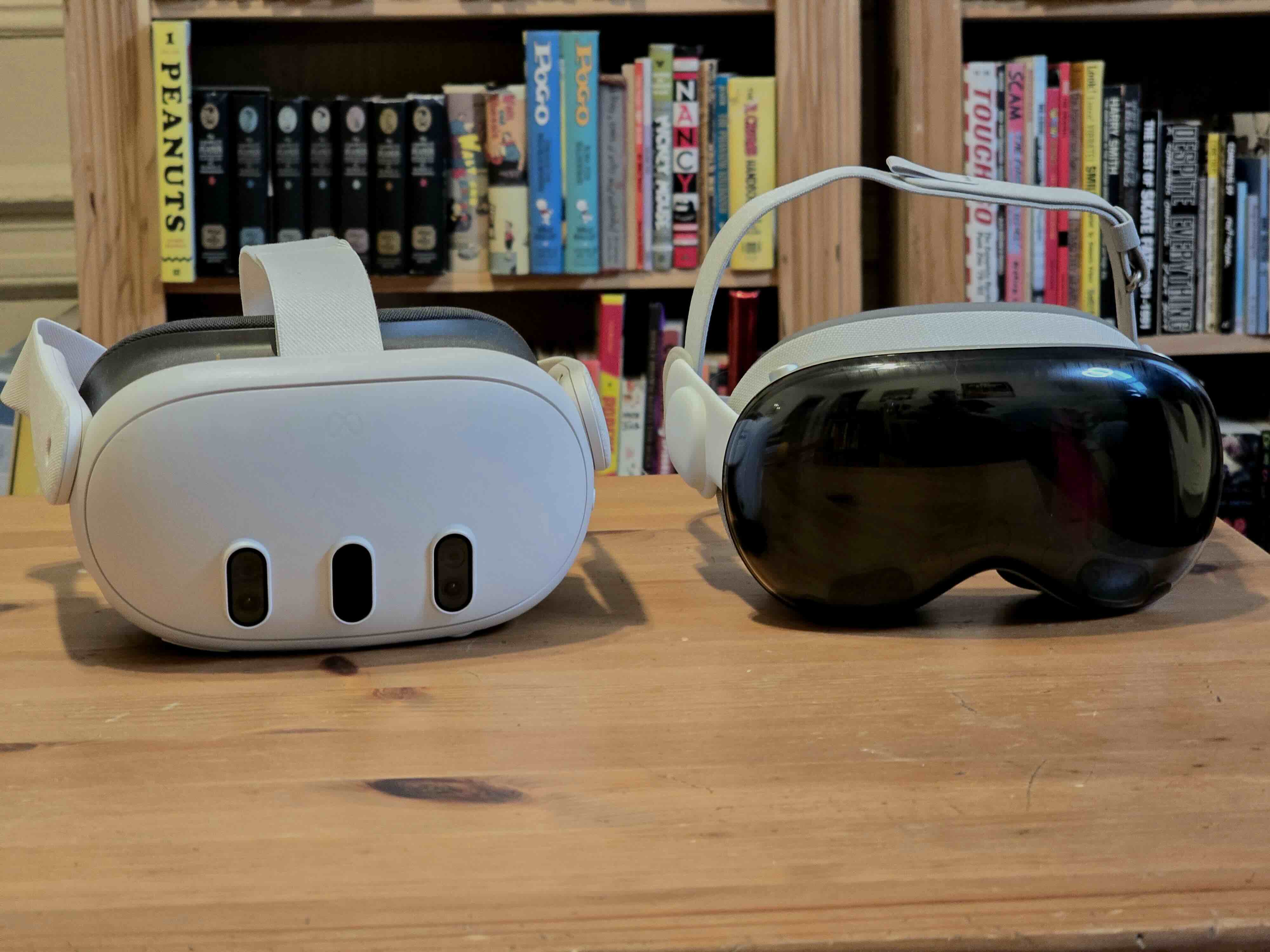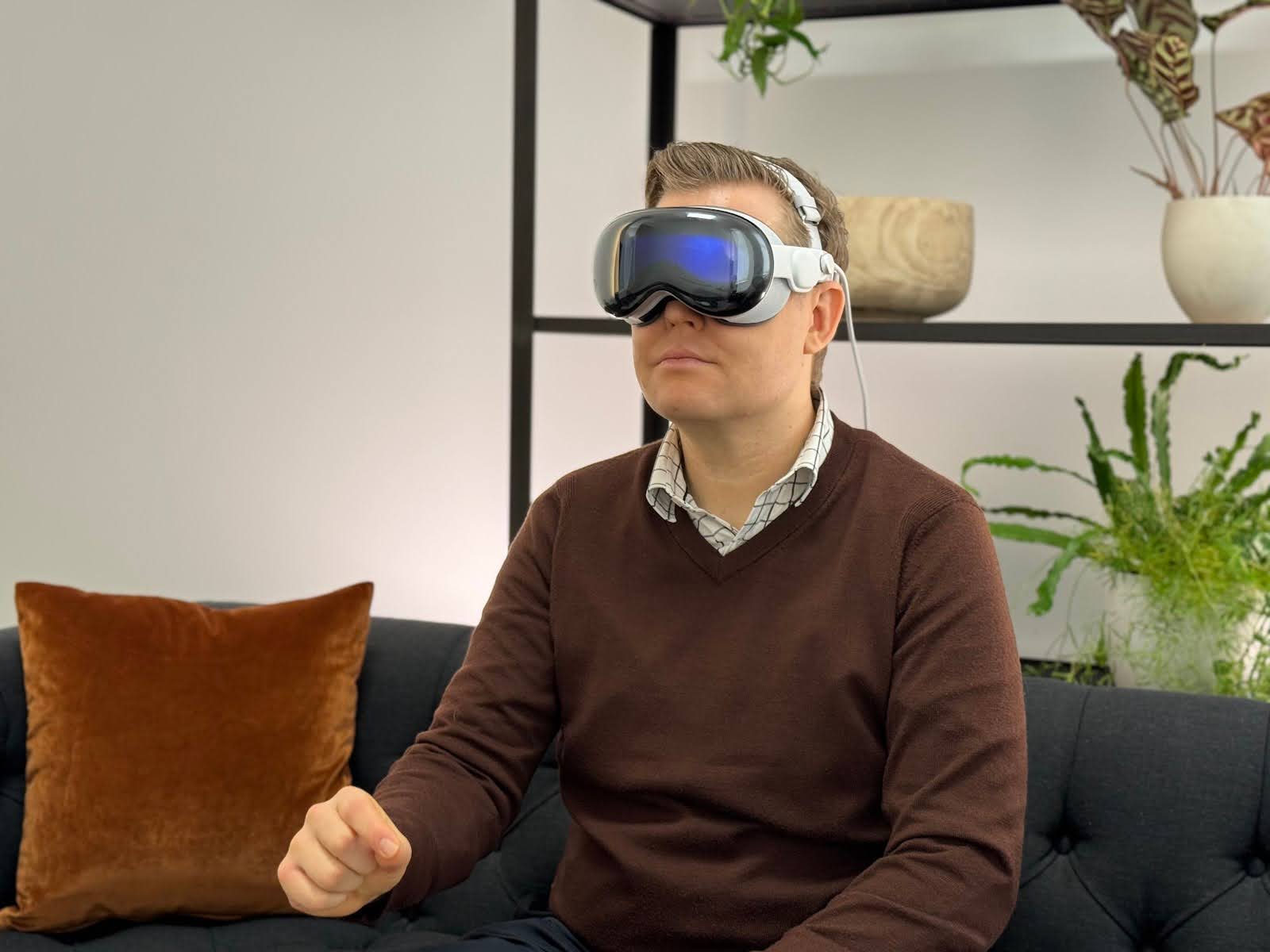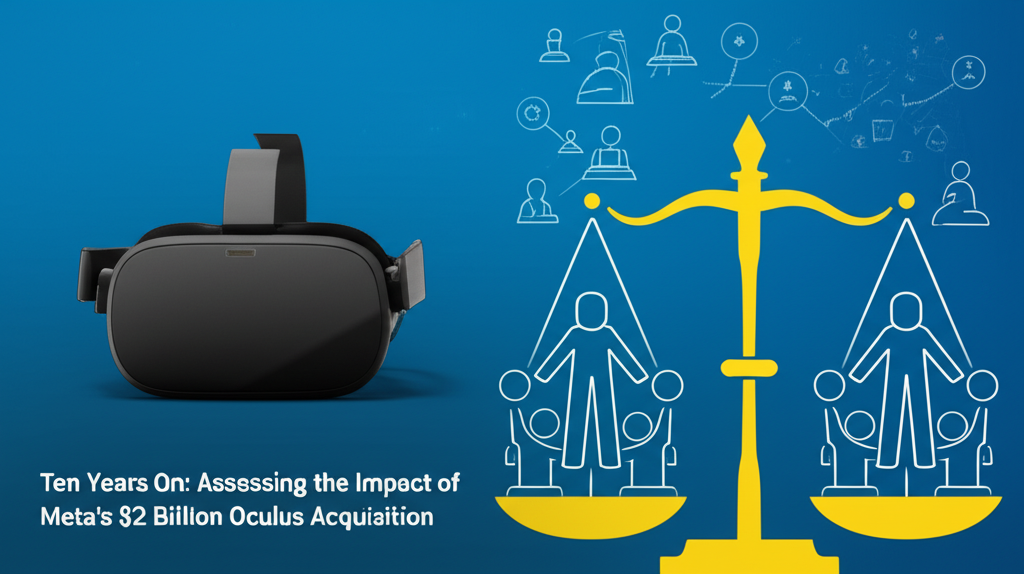Ten Years On: Assessing the Impact of Meta's $2 Billion Oculus Acquisition
Every year, publications like Time Magazine curate lists of the most impactful inventions, highlighting innovations that promise to reshape our future. As a writer covering technology, the search for truly game-changing devices is a constant pursuit, yet such breakthroughs are remarkably rare. You might be fortunate to encounter one or two in a year, if that. One such device that felt genuinely transformative when it first appeared on the horizon more than a decade ago was the prototype of the Oculus Rift.
In its nascent form, the Oculus Rift was a testament to the scrappy, entrepreneurial spirit that has long defined the tech industry's pioneering days. It was a device that looked less like polished consumer electronics and more like a science project – a hastily assembled ski mask adorned with wires and components. Yet, despite its rudimentary appearance, the presentation of the Rift prototype was nothing short of remarkable. It offered a compelling, albeit glitchy, glimpse into a future where virtual worlds felt tangible and immersive. This early encounter evoked romanticized images of the Homebrew Computer Club era, where tech enthusiasts tinkered in garages, soldering circuit boards and dreaming up the personal computing revolution.
Fast forward a decade. It was March 25, 2014, when Facebook, now known as Meta, announced its ambitious plan to acquire Oculus VR for approximately $2 billion in cash and stock. The deal sent ripples through the tech world, signaling a major commitment from one of the world's largest social media companies to the burgeoning field of virtual reality. At the time, the potential seemed limitless. VR was poised, many believed, to move beyond niche gaming applications and become a fundamental new computing platform, a successor to the desktop internet and the mobile smartphone.
A full decade has now passed since that landmark acquisition was announced. As of April 2024, it's a pertinent time to reflect on the trajectory of virtual reality under Meta's stewardship. Has the VR headset, specifically the Oculus line (now Meta Quest), fundamentally changed the world we live in? The simple answer, for most people, is not yet. Widespread, daily use of VR headsets for communication, work, or entertainment beyond dedicated gaming or specific applications remains far from ubiquitous. However, the story isn't one of abject failure either. There exists a complex middle ground between revolutionary transformation and complete collapse. So, where exactly does the Facebook/Oculus deal stand today?
The Grand Vision: Zuckerberg's Metaverse Dream
When Mark Zuckerberg announced the acquisition in 2014, his vision for Oculus extended far beyond gaming, although he acknowledged its importance as an initial application. "Immersive gaming will be the first, and Oculus already has big plans here that won’t be changing and we hope to accelerate," he wrote. But the true prize, in his eyes, was the potential for VR to become a new communication platform, enabling experiences previously confined to science fiction.
Zuckerberg painted a vivid picture of this future: "After games, we’re going to make Oculus a platform for many other experiences. Imagine enjoying a court side seat at a game, studying in a classroom of students and teachers all over the world or consulting with a doctor face-to-face — just by putting on goggles in your home." He explicitly compared the potential impact of the Oculus Rift to that of computers, the internet, and smartphones – technologies that fundamentally altered human interaction and society. The "dream of science fiction," he declared, was becoming a reality, and Facebook was positioning itself at the forefront of this new frontier.
This belief in VR as the gateway to a new digital era culminated in one of the most significant corporate rebrands in recent history. In late 2021, Facebook announced it was changing its corporate name to Meta Platforms, Inc., a move explicitly tied to its commitment to building the metaverse. This rebranding wasn't just cosmetic; it signaled a profound strategic shift, redirecting significant resources and corporate identity towards this future vision. As part of this transition, the well-known Oculus brand was also phased out, subsumed under the Meta umbrella.

The logic was clear: social media platforms, while dominant, might not represent the final evolution of online interaction. A new, more immersive paradigm – the metaverse – was on the horizon, and Meta intended to build and own it. However, despite the dramatic rebrand and the immense capital allocated, Meta and Zuckerberg struggled to articulate a clear, universally understood definition of the metaverse. They insisted it was exciting and transformative, urging the public to share their enthusiasm, but the concept remained nebulous for many.
For a large segment of the public, the term "metaverse" likely conjures images akin to virtual worlds like Second Life, a platform that has existed and evolved over many years. Mark Zuckerberg himself, perhaps inadvertently, reinforced this perception by heavily promoting Meta's own virtual world platform, Horizon Worlds, as synonymous with the metaverse concept. The platform, often criticized for its graphical simplicity and limited functionality in its early iterations, became a focal point for public understanding (and sometimes ridicule) of Meta's vision. Remember the significant attention given when avatars in Horizon Worlds finally gained legs?

The initial vision was grand, promising a seamless integration of virtual experiences into daily life. But realizing this vision has proven to be an incredibly complex and expensive undertaking.
The Financial Reality: Billions in the Red
From a purely financial perspective, the journey since the Oculus acquisition has been challenging, particularly for Meta's dedicated metaverse division, Reality Labs. This division is responsible for developing VR and AR hardware, software, and the foundational technologies for the metaverse. The numbers are stark: between the end of 2020 and the first quarter of 2024, Reality Labs accumulated losses totaling a staggering $42 billion. To put that into perspective, that's roughly 21 times the initial $2 billion price tag for Oculus, without even adjusting for inflation over the decade.
These losses represent a significant drain on Meta's resources, even for a company as profitable as it is. In the past year alone, Meta generated $134 billion in revenue and $39.1 billion in net income. While the core business of social media advertising remains immensely lucrative, the persistent, multi-billion-dollar losses from Reality Labs undoubtedly impact the company's overall profitability and draw scrutiny from investors.
So, why is Meta willing to hemorrhage such vast sums of money on its metaverse ambitions? The most straightforward, albeit somewhat cynical, answer is that the company can afford to. Its core advertising business provides a massive financial engine that subsidizes the long-term bet on the metaverse. However, this doesn't fully explain the strategy. Meta genuinely believes it is playing a long game, investing heavily now to potentially reap exponential rewards in the future.
A key part of this long-term strategy involves the hardware itself. It is widely understood that Meta sells its Quest headsets, including the popular Quest 2 and the newer Quest 3, at a loss. This is a deliberate tactic aimed at achieving market penetration and scale. Despite possessing arguably the best manufacturing capabilities and supply chain efficiency in the industry, Meta chooses to price its devices below their manufacturing cost. This strategy is a non-starter for short-term profitability, but the rationale is rooted in the belief that widespread device adoption is the critical first step towards building a viable ecosystem.
The end game for this hardware strategy is to get enough VR and mixed reality devices into the hands of consumers to reach a critical mass. This critical mass is necessary to generate word-of-mouth buzz, attract a large user base, and, crucially, incentivize developers to create compelling content – games, social experiences, productivity tools, and more – for the platform. If achieving this scale requires selling hardware at a loss, Meta appears willing to pay that price, operating under the principle that you have to spend money to potentially make significant money down the line in a nascent market.
This continues to be a massive, high-stakes bet. The duration for which Meta can sustain these losses and continue playing the long game depends heavily on the patience and confidence of its shareholders. If Meta can successfully saturate the market with its affordable hardware and cultivate a rich content library, it will be uniquely positioned to capitalize on the potential exponential growth of the mixed reality market, should that growth materialize.
Market Dominance and the Competitive Landscape
While the financial losses are undeniable, Meta's strategy of aggressive pricing and heavy investment has yielded significant results in terms of market share. By making VR hardware relatively affordable and accessible, Meta has effectively cornered the consumer VR headset market. This dominance has had a profound impact on the competitive landscape.
As an executive from HTC Vive, a long-time player in the VR space, noted in February 2024, "I think Meta has adjusted the market perception of what this technology should cost." This observation highlights a critical challenge for competitors: it's incredibly difficult to compete with Meta on price in the consumer space when Meta is willing to sell its hardware below cost. Smaller companies, or those without a massive, profitable core business to subsidize hardware, simply cannot match Meta's pricing strategy.
This dynamic has led to a bifurcation of the VR/AR market. While Meta focuses on the consumer segment with its Quest line, many of its competitors, including HTC Vive, have increasingly shifted their focus to the enterprise market. Businesses often have deeper pockets and are willing to pay a premium for specialized hardware, software, and support, making the enterprise segment a more viable path for companies unable to compete with Meta's consumer pricing.
Judging the success of Meta's Oculus acquisition purely by its share of the VR headset market reveals a story of unprecedented dominance. According to IDC data from Q2 2023, Meta held a commanding 50.2% share of the worldwide VR headset market. While this isn't comparable to the scale of the smartphone market, where billions of devices are sold annually, it represents a significant installed base for a relatively new technology. By early 2023, Meta was estimated to have sold around 20 million Quest headsets. Interestingly, the older Quest 2 continued to outsell the newer Quest 3 towards the end of 2023, reinforcing the idea that consumers are primarily looking for an inexpensive entry point into VR.
This market share data validates one key aspect of Meta's thesis: there is demand for accessible, affordable VR hardware. By providing this low-cost on-ramp, Meta has brought more people into the VR ecosystem than any other company.

Apple's Entry: Validation or Competition?
The competitive landscape shifted dramatically with the entry of a major new player: Apple. When Apple announced its Vision Pro headset at WWDC in June 2023, it generated significant buzz and, perhaps surprisingly, a sense of validation among existing VR headset manufacturers. Many saw Apple's entry, after decades of the technology struggling for mainstream acceptance, as a powerful signal that spatial computing and mixed reality were finally poised for broader adoption.

While it's true that companies often express optimism when Apple enters their market – a sentiment sometimes followed by intense competition that drives less prepared players out – Apple's move into the high-end mixed reality space did indeed provide a form of validation for the entire category. For Meta, specifically, Apple's entry offered an opportunity to highlight the key differentiators of its own strategy.
Mark Zuckerberg was quick to compare the Meta Quest 3 and the Apple Vision Pro. He pointed out two significant advantages for the Quest: its significantly lower price point (the Vision Pro launched at $3,499, compared to the Quest 3's $499) and the fact that the Quest doesn't require an external battery pack. Zuckerberg also controversially claimed that the Quest was "so much better for the vast majority of things that people use these headsets for" despite the massive price difference.
While the Vision Pro is widely acknowledged as a more technologically advanced piece of hardware, the debate over whether it's $3,000 better than the Quest 3 is subjective and depends heavily on the user's intended applications and budget. What is clear is that the vast price gulf places the two products in different market categories. Apple, with its premium pricing, appears to be initially targeting developers, early adopters, and potentially enterprise users, while Meta remains committed to democratizing access to VR through its more affordable Quest line, even if it means selling hardware at a loss.
Apple's entry, while validating the potential of spatial computing, also reinforces Meta's position as the leader in the *consumer* VR market. The competitive dynamic is now less about whether VR will exist, and more about which platform and ecosystem will ultimately gain mainstream traction, and at what price point.
The Evolving Landscape of Virtual Interaction
It's still very early days for mixed reality and the broader vision of the metaverse. The path to widespread adoption, if it ever occurs, will be paved with countless technical challenges, content development hurdles, and shifts in consumer behavior. As we reflect on the decade since the Oculus acquisition, it's useful to revisit Zuckerberg's 2014 predictions about the future uses of VR: courtside seats at games, global classrooms, face-to-face doctor consultations – all accessible by simply putting on goggles at home.
Re-reading these examples from the vantage point of 2024, a decade marked by unprecedented changes in how we work, learn, and socialize, reveals an interesting paradox. Zuckerberg was largely correct about the *types* of virtual interactions that would become more common, but perhaps less accurate about the *delivery mechanism*. The past four years, in particular, dramatically accelerated the adoption of virtual activities. The global pandemic de-stigmatized remote work, online learning, virtual social gatherings, and even telehealth appointments.
Platforms like Zoom, Microsoft Teams, Google Meet, and various online collaboration tools have become integral to daily life for millions, if not billions, of people. Online gaming communities continue to thrive and expand. Streaming services offer immersive entertainment experiences from the comfort of home. These activities fulfill many of the use cases Zuckerberg envisioned – connecting people globally, providing access to events and education, enabling remote consultations – but they do so primarily through existing devices like laptops, tablets, and smartphones, without requiring a VR headset.
This doesn't invalidate the potential of VR/AR, but it highlights that the need for *immersive* virtual experiences delivered specifically through headsets is not yet a prerequisite for many valuable online interactions. The convenience and accessibility of existing 2D interfaces on ubiquitous devices currently outweigh the benefits of donning a headset for a significant portion of potential use cases.
Challenges and the Path Forward
Despite Meta's market share dominance and significant investment, the path to mainstream VR/metaverse adoption is fraught with challenges:
- Hardware Limitations: Current headsets, while improving, can still be bulky, uncomfortable for extended use, and suffer from issues like motion sickness for some users.
- Content Gap: While VR gaming has a strong foothold, the availability of compelling, must-have content beyond gaming – for productivity, social interaction, education, etc. – is still relatively limited compared to traditional platforms.
- User Experience: Navigating virtual environments and interacting with interfaces can still feel less intuitive than traditional computing, although mixed reality features are beginning to bridge this gap.
- Defining the Metaverse: The lack of a clear, compelling use case or definition for the "metaverse" beyond gaming and basic social hangouts makes it difficult for consumers to understand its value proposition.
- Cost: While Meta's Quest is relatively affordable, the overall cost of entry (including accessories and software) and the perceived value proposition still limit mass adoption. High-end devices like the Vision Pro are prohibitively expensive for most consumers.
- Privacy and Safety: Operating in immersive virtual environments raises new questions about data privacy, user safety, and moderation.
Meta's strategy appears to be a long-term bet on overcoming these challenges through iteration, investment, and ecosystem building. By subsidizing hardware, they aim to grow the user base, which in turn attracts developers, leading to more content, which makes the hardware more appealing, creating a virtuous cycle. The entry of Apple, while competitive, also pushes the boundaries of the technology and could help educate the market about the potential of spatial computing.
Conclusion: A Decade of Investment, Not Yet Transformation
Ten years after Facebook acquired Oculus, the landscape of virtual reality is undeniably different. Meta's massive investment has prevented the technology from fading back into obscurity, establishing a dominant player in the consumer hardware market and pushing the boundaries of what affordable VR can achieve. The initial, almost naive, optimism about VR instantly changing the world hasn't materialized on the predicted timeline.
The metaverse, as envisioned by Meta, remains largely unrealized, and the billions spent have resulted in significant financial losses. However, the investment has built an infrastructure – a large installed base of users and a growing developer ecosystem – that could potentially serve as the foundation for future growth. The competition from companies like Apple, while formidable, also validates the long-term potential of the underlying technology.
The pandemic demonstrated the public's willingness to embrace virtual interactions, but primarily through existing, non-headset platforms. The challenge for Meta and the broader VR/AR industry is to demonstrate that immersive experiences delivered through headsets offer a sufficiently compelling, convenient, and valuable alternative or supplement to current digital interactions to justify the hardware, the cost, and the shift in behavior.
As of April 2024, the Facebook/Oculus acquisition is neither a world-changing triumph nor an abject failure. It is a massive, ongoing experiment – a testament to Meta's willingness to make a multi-billion-dollar bet on a future that is taking longer, and costing more, to arrive than initially anticipated. The next decade will reveal whether this patient, expensive strategy ultimately pays off, transforming virtual reality from a promising niche into the fundamental computing platform Zuckerberg envisioned.
